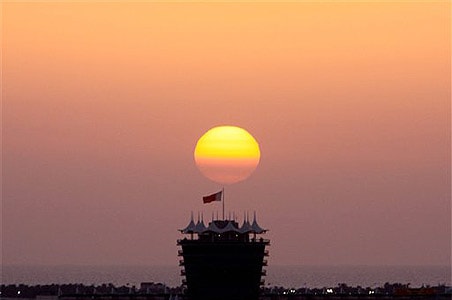
London:
For over 400 years, astronomers have studied the sun from afar. Now, a team at European Space Agency, with backing from NASA, is planning to send two space missions to explore the brightest star.
According to the ESA astronomers, the aim of the space missions is to get closer to the centre of the sun, which will help in unravelling a long list of questions that exist about the star, including why its outer atmosphere is hotter than its surface, and what causes solar wind, sun spots and flares.
The spacecraft will travel more than 70 million miles to one of the least hospitable regions of solar system, where temperatures are hot enough to melt even metal and intense radiation along with chaotic magnetic fields can tear man-made structures apart.
In fact, one of the missions, known as Solar Orbiter, will orbit the sun to give ESA scientists a view of its poles, which have never been seen before. The mission is expected to launch in 2017, and design work is already under way, 'The Sunday Telegraph' reported.
The spacecraft, fitted with a 15-inch-thick heat shield to protect it from the intense heat and radiation, will orbit at around 20 million miles from the Sun's surface, some two-thirds of the distance between the Sun and Mercury.
It will take the most detailed pictures of the Sun's surface ever achieved while also measuring particle emissions and magnetic fields, the astronomers say.
A second mission being planned by NASA, known as Solar Probe Plus, will enter the Sun's outer atmosphere, the corona, and fly just 4.3 million miles from the star's surface.
"The Sun influences us in many ways and is central to life on Earth," said Prof Richard Harrison, a solar scientist at Rutherford Appleton Laboratory who's one of the scientists who originally proposed the Solar Orbiter mission.
Since the Earth orbits in a flat plane, the Sun can only ever be seen "side-on", according to the astronomers.
Prof Harrison said: "Although humans have been studying the Sun for millennia, we still know relatively little. One thing we have never done is to send a spacecraft to visit the Sun or looked at it from above or below."
The Solar Orbiter will be the size of a family car and will be equipped with a suite of instruments designed to map the Sun's surface while measuring the chemical and magnetic environment around it.
"It is a serious engineering challenge. It is going to a place where the Sun will be beating down 20 times as much as it does here on Earth," said Ralph Cordey of Astrium, a space company charged with designing the Solar Orbiter.
According to the ESA astronomers, the aim of the space missions is to get closer to the centre of the sun, which will help in unravelling a long list of questions that exist about the star, including why its outer atmosphere is hotter than its surface, and what causes solar wind, sun spots and flares.
The spacecraft will travel more than 70 million miles to one of the least hospitable regions of solar system, where temperatures are hot enough to melt even metal and intense radiation along with chaotic magnetic fields can tear man-made structures apart.
In fact, one of the missions, known as Solar Orbiter, will orbit the sun to give ESA scientists a view of its poles, which have never been seen before. The mission is expected to launch in 2017, and design work is already under way, 'The Sunday Telegraph' reported.
The spacecraft, fitted with a 15-inch-thick heat shield to protect it from the intense heat and radiation, will orbit at around 20 million miles from the Sun's surface, some two-thirds of the distance between the Sun and Mercury.
It will take the most detailed pictures of the Sun's surface ever achieved while also measuring particle emissions and magnetic fields, the astronomers say.
A second mission being planned by NASA, known as Solar Probe Plus, will enter the Sun's outer atmosphere, the corona, and fly just 4.3 million miles from the star's surface.
"The Sun influences us in many ways and is central to life on Earth," said Prof Richard Harrison, a solar scientist at Rutherford Appleton Laboratory who's one of the scientists who originally proposed the Solar Orbiter mission.
Since the Earth orbits in a flat plane, the Sun can only ever be seen "side-on", according to the astronomers.
Prof Harrison said: "Although humans have been studying the Sun for millennia, we still know relatively little. One thing we have never done is to send a spacecraft to visit the Sun or looked at it from above or below."
The Solar Orbiter will be the size of a family car and will be equipped with a suite of instruments designed to map the Sun's surface while measuring the chemical and magnetic environment around it.
"It is a serious engineering challenge. It is going to a place where the Sun will be beating down 20 times as much as it does here on Earth," said Ralph Cordey of Astrium, a space company charged with designing the Solar Orbiter.
Track Latest News Live on NDTV.com and get news updates from India and around the world

